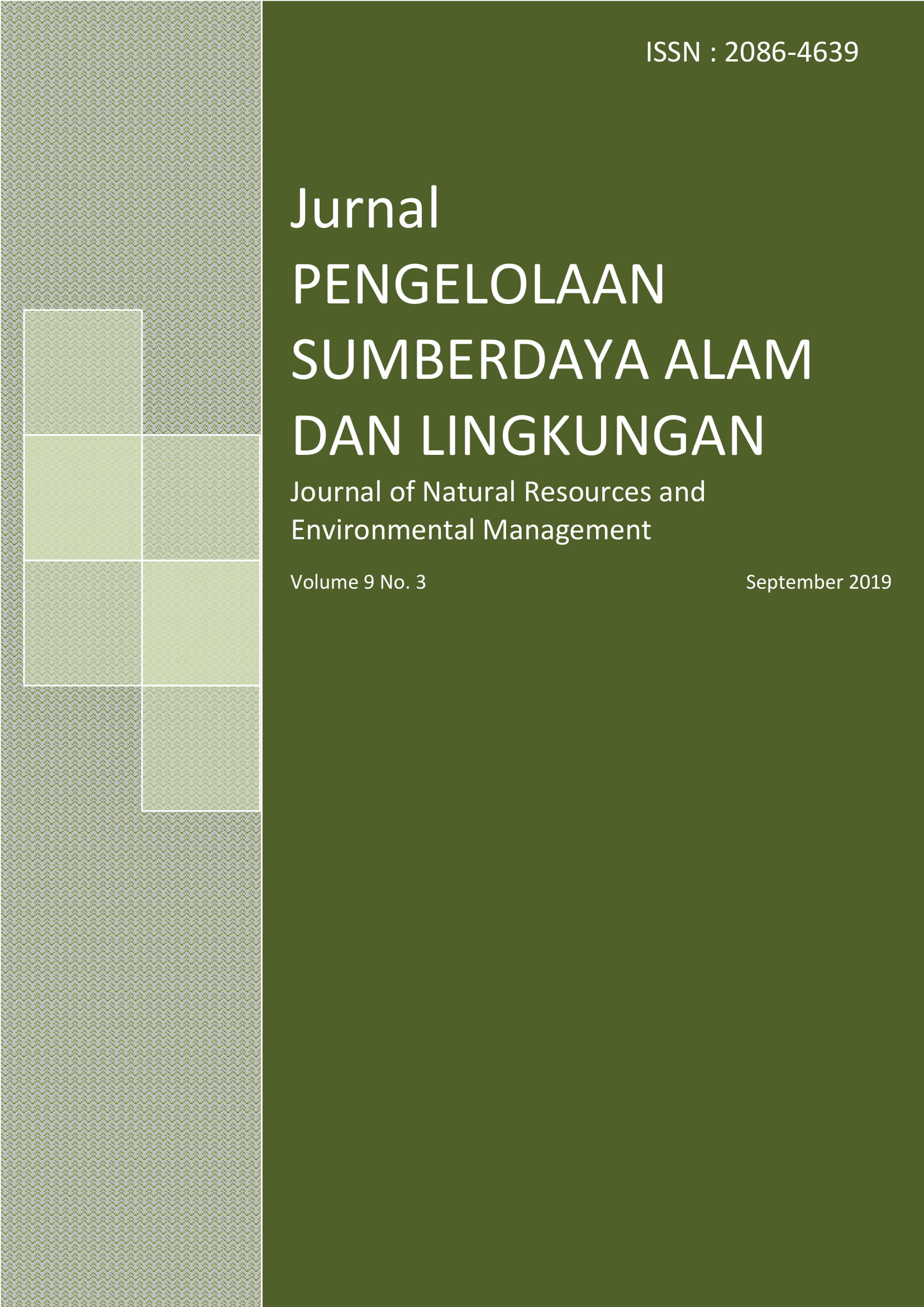Inventarisasi Ekosistem Mangrove di Pesisir Randutatah, Kecamatan Paiton, Jawa Timur
Abstract
References
[CITES] Convention on International Trade in Endangered Species of Wild Flora and Fauna. 2009. CITES. Appendices I, II, dan III [Internet]. [diunduh 2018 Jan 15]. Tersedia pada https://www.cites.org.
Arinardi OH, Sutomo AB, Yusuf SA, Trimaningsih E A, Riyono SH. 1997. Kisaran kelimpahan dan komposisi plankton predominan di Perairan Kawasan Timur Indonesia. Jakarta: P3O-LIPI.
Barbour MG, Burk JH, Pitts WD. 1987. Terrestrial Plant Ecology. Second Edition. California: The Benjamin/Comings Publishing Company.
Bibby C, Jones M, Marsden S. 2000. Teknik-Teknik Lapangan Survei Burung. Bogor: Birdlife Indonesia Programme.
Brower JE, Zar JH, Ende CNV. 1980. Field and Laboratory Methods for General Ecology. Dubuque: Wm. C. Brown Publisher.
Giri C, Pengra B, Zhu Z, Singh A, Tieszen LL. 2010. Monitoring mangrove forest dynamics of the Sundarbans in Bangladesh and India using multi-temporal satellite data from 1973 to 2000. Estuarin Coastal and Shelf Science. 73: 91–100.
Heyer WR, Donnelly MA, McDiarmid RV, Hayek LA & Foster MS.(eds). 1994. Measuring and Monitoring Biological Diversity. Standar Methods for Amphibians. Washington DC: Smithsonian Institution Press.
Kusmana C, Hikmat A. 2015. Keanekaragaman Hayati Flora di Indonesia. Jurnal Pengelolaan Sumberdaya Alam dan Lingkungan. 5(2): 187-198.
Kusmana C. 2011. Management Of Mangrove Ecosystem In Indonesia. Jurnal Pengelolaan Sumberdaya Alam dan Lingkungan. 2(1): 152-157.
MacKinnon J, Phillipps K, vanBalen B. 2011. Burung-Burung di Sumatera, Jawa, Bali dan Kalimantan. Bogor: Burung Indonesia.
Malik A, Fensholt R, Mente O. 2015. Economic Valuation of Mangroves for Comparison with Commercial Aquaculture in South Sulawesi, Indonesia. Forests. (6): 3028-3044.
Muhamma Ali, Vadus S, Saima J, Tasveer Z. 2003. Studies on Biodiversity in Relation to Seasonal Variation in Water of River Indus at Ghazi GAT, Punjab, Pakistan. Pakistan Journal of Biological Sciences. 6 (21): 1840-1844.
Van Helvoort B. 1981. Study of Bird Population in The Rural Ecosystem of West Java, Indonesia a Semi Quantitative Approach. Nature Conservation Dept. The Netherlands: Agriculture University Wageningham.
Authors
Authors who publish with this journal agree to the following terms:
- Authors retain copyright and grant the journal right of first publication with the work simultaneously licensed under a Creative Commons Attribution License that allows others to share the work with an acknowledgement of the work's authorship and initial publication in this journal.
- Authors are able to enter into separate, additional contractual arrangements for the non-exclusive distribution of the journal's published version of the work (e.g., post it to an institutional repository or publish it in a book), with an acknowledgement of its initial publication in this journal.
- Authors are permitted and encouraged to post their work online (e.g., in institutional repositories or on their website) prior to and during the submission process, as it can lead to productive exchanges, as well as earlier and greater citation of published work (See The Effect of Open Access).






